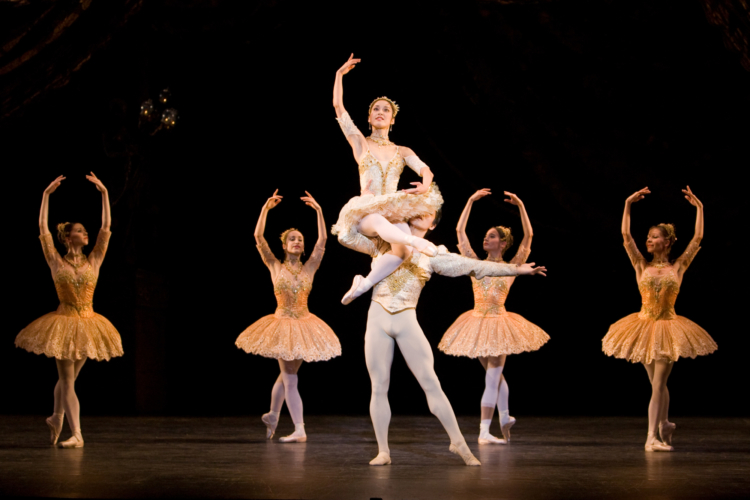Happy March everybody! With Spring maybe, possibly, hopefully, just around the corner, we have turned our attention to this month’s Cardio Ballet theme, Paquita.
A Romantic ballet in 2 acts and 3 scenes, Paquita has gone through quite the journey. It was originally choreographed in Paris for the Paris Opera Ballet in 1846 by Joseph Mazilier. The music was composed by French composer, Édouard Deldevez, and this original version ran until about 1851. The original cast included Carlotta Grisi as Paquita, the protagonist, and Lucien Petipa as Lucien, Paquita’s love interest.

In 1847, Marius Petipa (Swan Lake, La Bayadère, etc.) re-staged Paquita with music by Ludwig Minkus, making it the first ballet ever staged by Petipa in Russia. Fast forward thirty-some years and Petipa would revisit the ballet once again in 1881. In his 1881 iteration, Petipa made amendments to the original ballet, including the addition of the Grand Pas Classique one of the most well-known parts of the ballet to this day. The Mariinsky would continue to perform the 1881 version until 1926.
Although the original full-length ballet eventually fell to the wayside, parts of Petipa’s revival have remained intact, including the Grand Pas Classique and several recognizable variations from other ballets (ex. Cupid’s variation from Don Quixote).
The ballet has seen several restagings over the course of the 20th and 21st centuries. In 1964, Rudolf Nureyev restaged Grand Pas Classique for the Royal Academy of Dance, and in 1983, another restaging was set on the dancers of ABT by Natalia Makarova. In the early 2000s, a new production of Paquita was commissioned for the Paris Opera Ballet, and in 2014, Alexei Ratmansky created a new version for the Bayerisches Staatsballett in Munich, Germany. In 2017, Yuri Smekalov introduced yet another new version for the Mariinsky which you can learn more about here through The Kennedy Center.

Before it was dissected and parceled, the full-length ballet was at one time a storybook ballet, and the plot is well…interesting.
The ballet takes place during Napoleon’s occupation in Spain and tells the tale of Paquita, the heroine. She was abducted by Romani people however is actually of noble birth. Early in the story, she saves a French officer’s (Lucien) life from the Spanish government, who had sent an assassin, Iñigo, to kill him. Naturally, they fall in love although their social ranks keep them from being together. Through a series of dramatic events, Paquita comes to learn of her true identity and ultimately is able to marry Lucien, who, it turns out, is her cousin. Plot twist!
In reflecting the different social ranks in this ballet, the movement by Paquita’s abductors and anyone considered lower class under Napoleon’s rule performs a lot of Spanish character dance. The Grand Pas Classique, by contrast, is viewed as “pure dance.”
To learn more about the origins of Paquita, the Marius Petipa Society has an excellent breakdown here.

Today, the variations of this ballet are commonly performed individually or as part of a series of variations combined with the Grand Pas Classique. Beckanne Sisk (formerly with Ballet West, soon to join Houston Ballet) shares her approach to these variations in a Pointe Magazine article here.
Be sure to sign up for this Sunday’s Sips and Clips, where we will dive further into the ballet’s history, elements of the choreography, and more! We’ll also watch clips from the ballet and celebrate the power of Paquita’s female heroine that can be found within this strange plot in honor of Women’s History Month! Sign up link here.
Sources
https://dancetabs.com/2019/10/mariinsky-ballet-paquita-washington/
https://pointemagazine.com/issuesdecember-2012january-2013how-its-done-perfecting-paquita/



